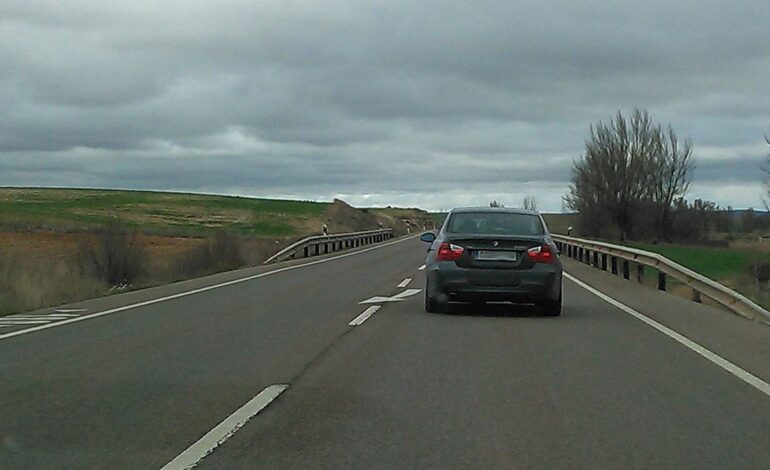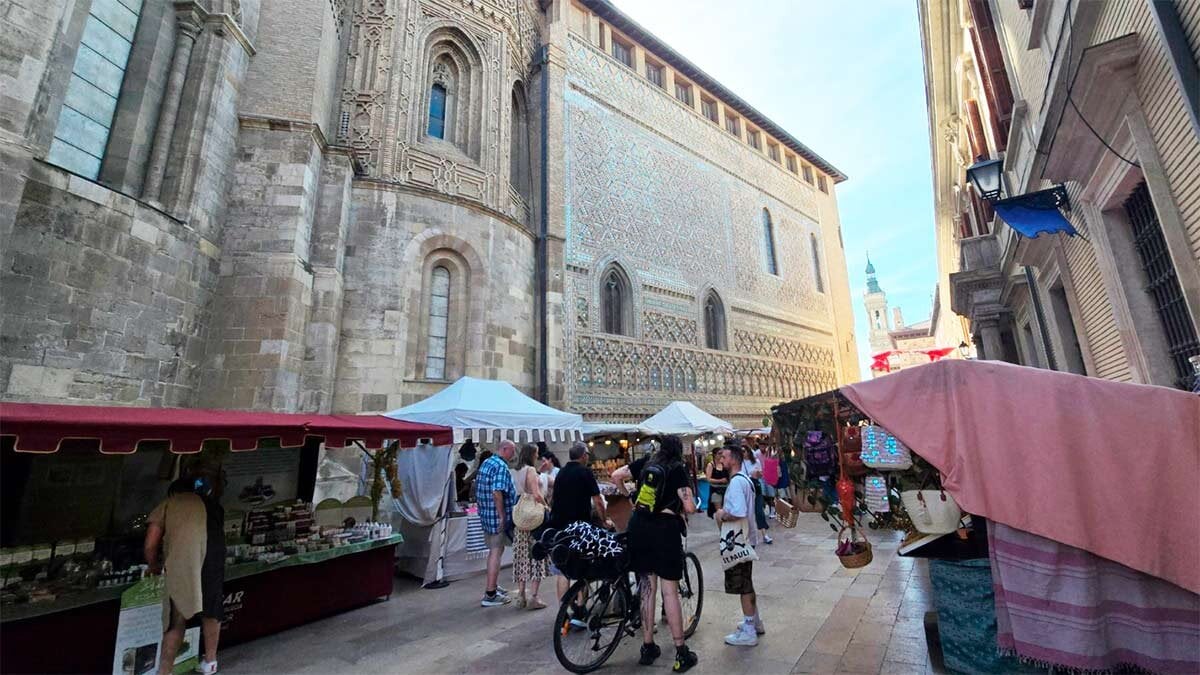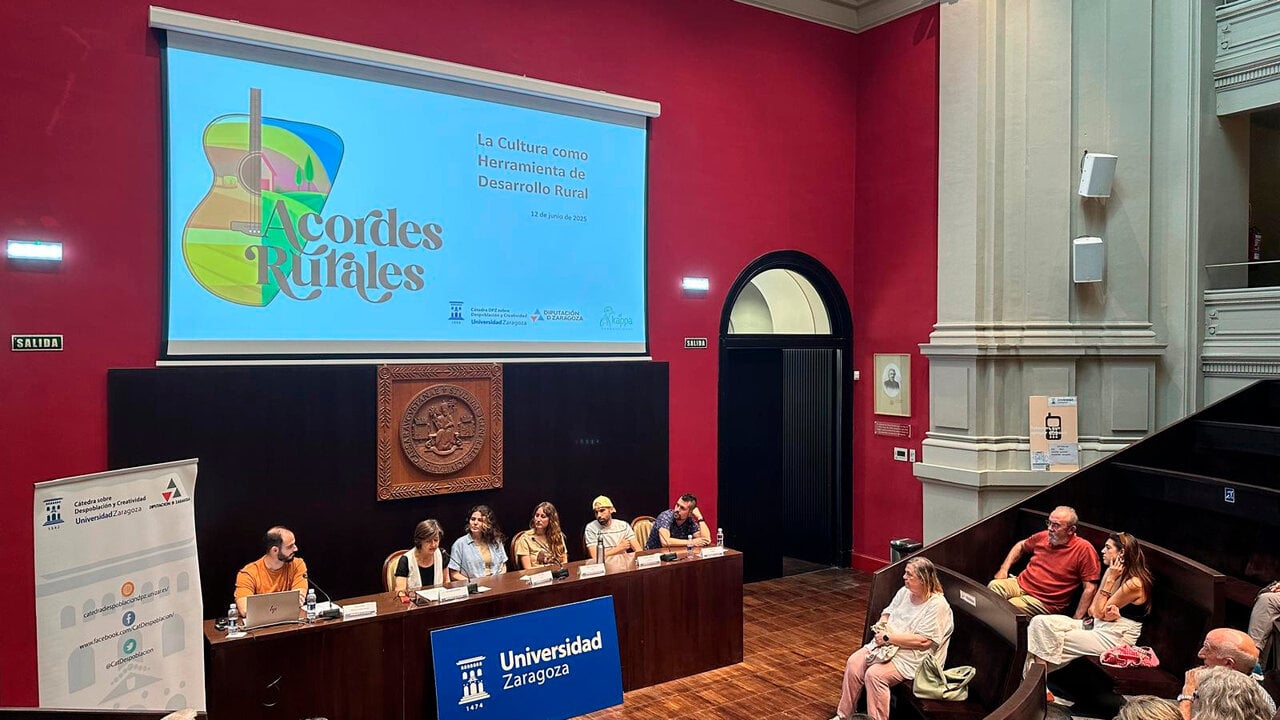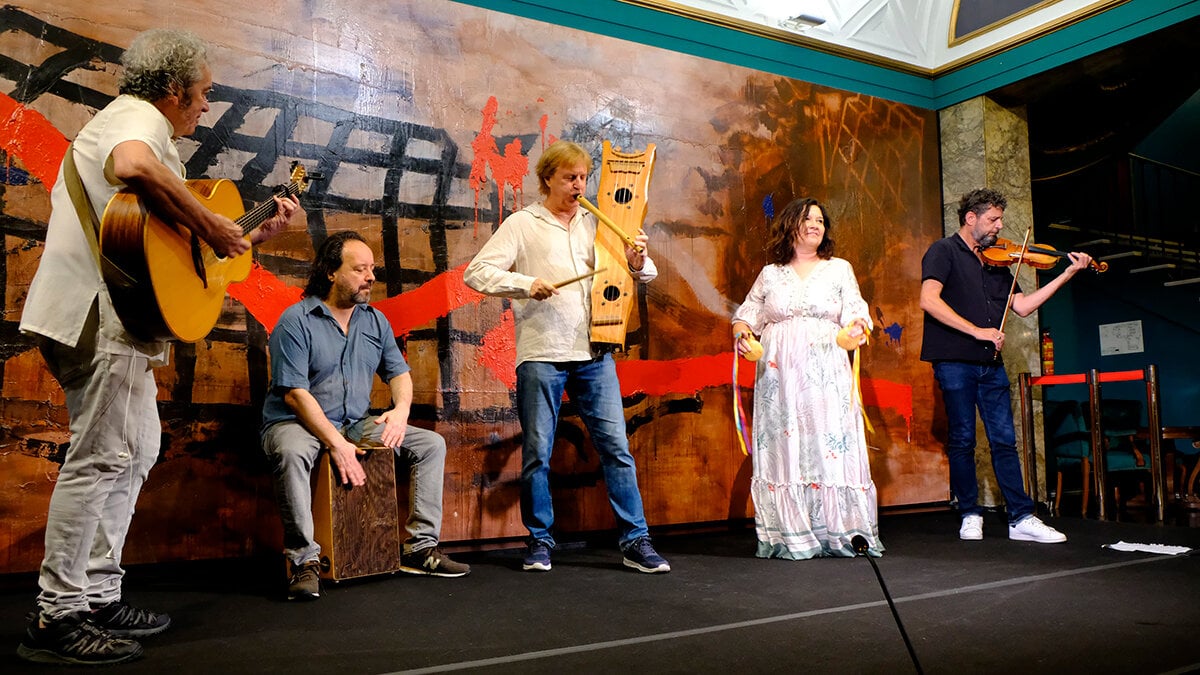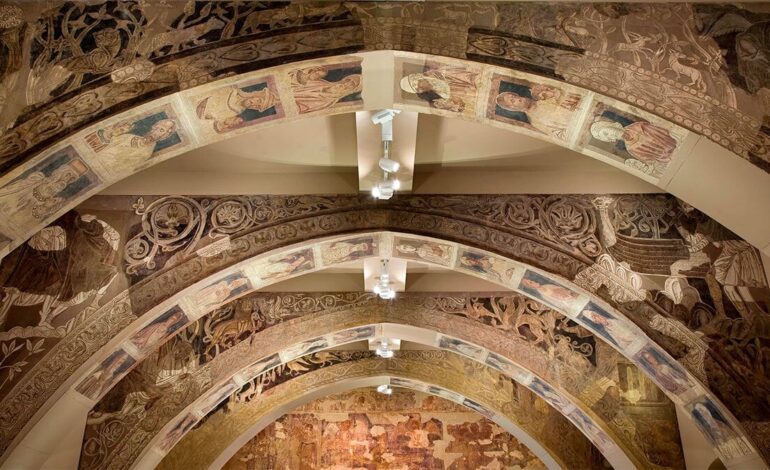
The DGA asks via Burofax for the documentation of the paintings of Sijena al Mnac
The government of Aragon It will send, throughout this Wednesday, a bureaux so that the National Museum of Art of Catalonia (MNAC) contributes the documentation rigged to the paintings of the Sijena monastery exhibited in Barcelona and that they must return to the Cenobio by court order. It is the response of the regional executive on the third day of the work of the technicians in the facilities, when they have not yet been able to access these records on the state of conservation of the frescoes, an issue that was fixed in the resolution for the final execution of the Supreme Court Judgment.
“It is indispensable because it marks the traceability of the state of conservation and the operations that have been carried out throughout the years that the paintings have been in Catalonia,” explained the general director of Culture of the DGA, Pedro Olloqui. The person in charge of the branch has recognized that they are not “optimistic” and has shaved the “attitude” and “behavior” of the MNAC. “It is a serious and important issue for us because there is a resolution and the Catalan institutions and the museum are obliged to deliver that documentation,” he insisted.
Olloqui also recalled that “the first hours” of the intervention in rooms 16 and 17 “were difficult for the technical team”, although the workers did “facilitate the work to the maximum”, not so, he said, the institutional representatives. The general director has pointed out that, in these three days, “the volume of information obtained is very high.”
In the following steps, Olloqui has continued, “physical samples will be taken to know more accurately” the state of conservation of the works. He has thus continue working and has said not wanting to “extend the tension beyond the reasonable.”
“Logically, it is part of the institutional discomfort that we are living and that is nothing more than a manifestation of this opposition that makes it difficult to proceed with the transfer of the paintings to the site from which they never had to leave, which is the monastery of Sijena,” he concluded.


